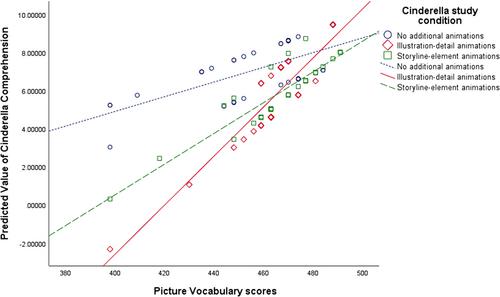Effects of varied multimedia animations in digital storybooks: A randomised controlled trial with preschoolers
Abstract
Background
Rapid growth in early childhood device usage has raised critical questions about the potential impact of digital storybooks on children's reading outcomes. The current study examined how two types of multimedia animations in digital storybooks – animations of storyline elements or details in the illustrations – influenced the story comprehension and enjoyment of young children.
Methods
Preschool children (n = 86) read a digital storybook in one of three conditions: storyline-element animations, illustration-detail animations or no additional animations. Two digital storybooks with varied difficulty and numbers of animations were examined. After an initial evaluation of vocabulary skills, children read their assigned version of each digital storybook and then completed assessments of story comprehension and enjoyment.
Results
Overall, animations focused on illustration details hindered comprehension. For a less difficult story (with limited animations), animations focused on storyline elements improved comprehension. In a more difficult story (with many animations), animations focused on storyline elements enhanced comprehension only for children with high-vocabulary skills. There were no differences in story enjoyment across conditions.
Conclusions
Although illustration details are related to story content, digital storybook animations focused on these visual details may be overwhelming for young children. While animations that depict or extend storyline elements can support comprehension for children, large numbers of these animations in difficult stories have a counterintuitive effect – improving comprehension only for children with high vocabulary. Even storyline-element animations in difficult stories may overload processing and hinder comprehension. Given no observed effects of varied animations on story enjoyment, a strategic, restrained approach to embedded animations focused on storyline elements may be warranted.


 求助内容:
求助内容: 应助结果提醒方式:
应助结果提醒方式:


